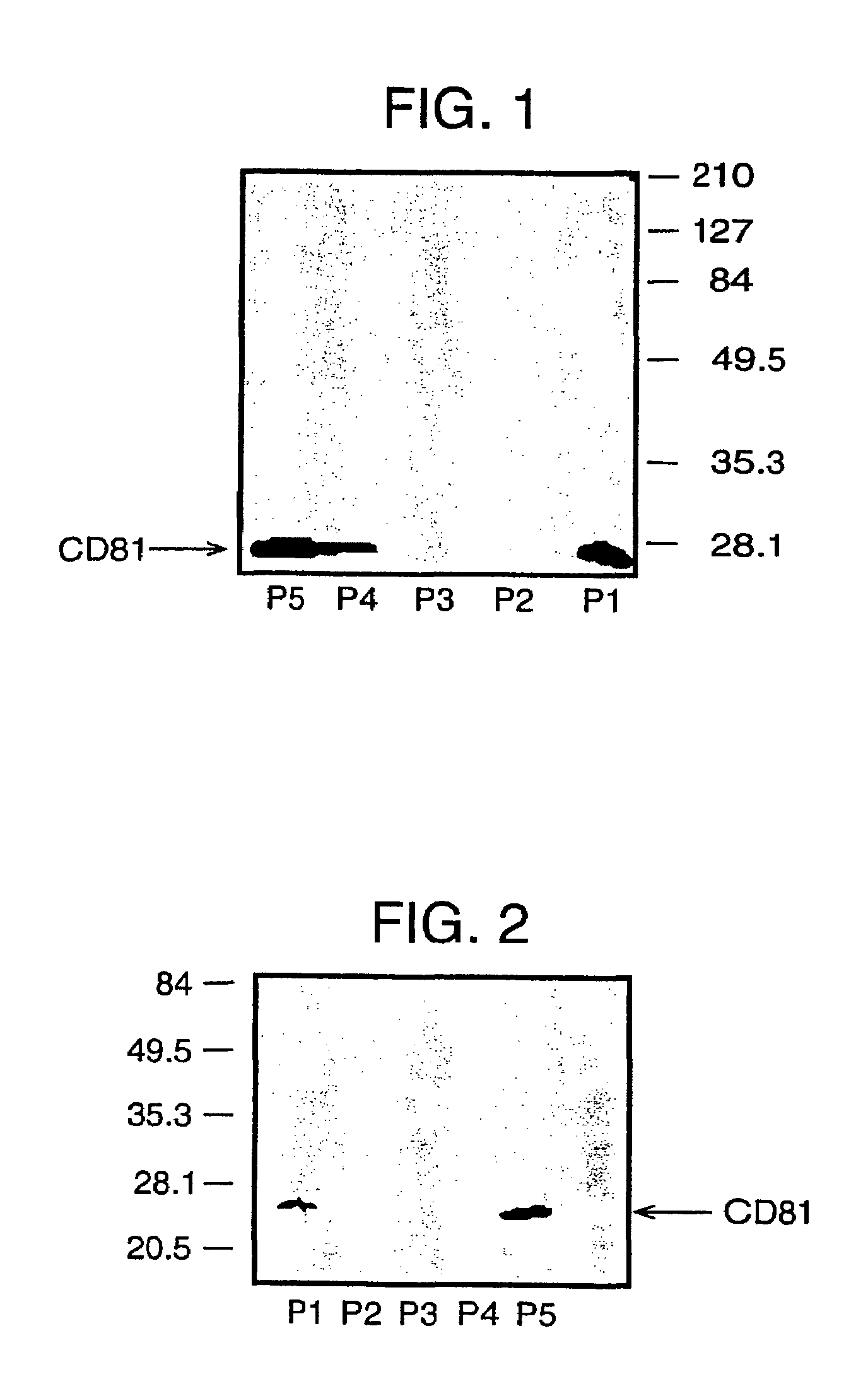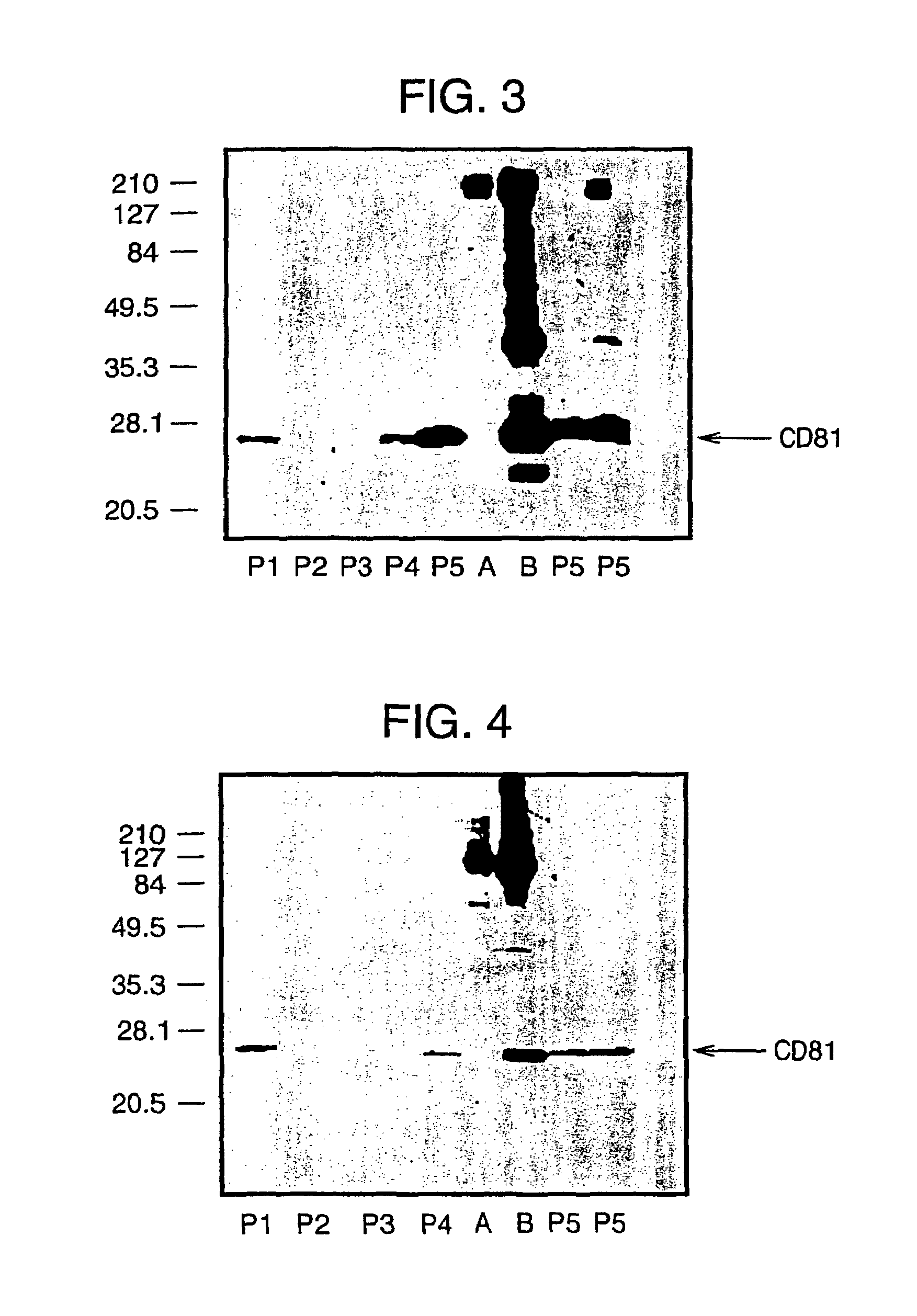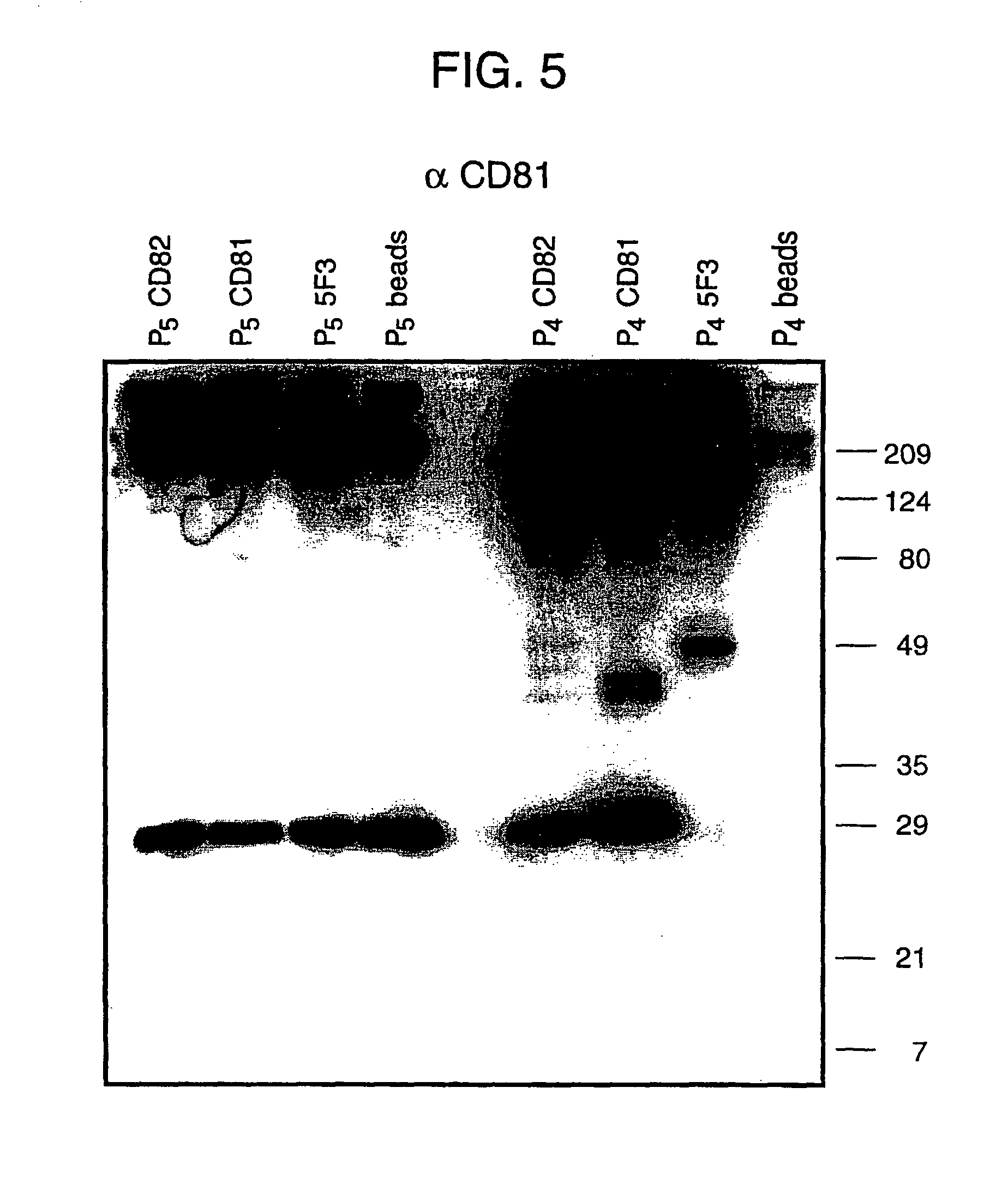Method for the preparation of purified HCV RNA by exosome separation
a technology of exosome separation and purification method, which is applied in the field of hepatitis c virus isolation method, can solve the problems of poor cell culture system, limited study of hcv life cycle, and considerable hinderance in hcv research, and achieves the effect of simple preparation
- Summary
- Abstract
- Description
- Claims
- Application Information
AI Technical Summary
Benefits of technology
Problems solved by technology
Method used
Image
Examples
example 2
Preparation of HCV RNA
[0041]Given the results presented above, exosomes can now be isolated from plasma of HCV-infected patients enriched in HCV RNA. The experimental approach is as follows.
[0042]Plasma from HCV-infected human blood recovered after Ficoll separation is processed following the differential centrifugation protocol described above. The exosome-enriched supernatant collected from the centrifugation step at 10000×g is incubated overnight with anti-CD81-coated magnetic beads. Alternatively, after two clearing steps, HCV-infected plasma may be centrifuged at 20000×g before overnight incubation with anti-CD81-coated magnetic beads. Magnetic beads are then washed three times in 1% BSA in 50 mM Tris-HCl (pH 8.0), 1 mM EDTA, and 100 mM NaCl (TEN) buffer by magnetic separation and viral RNA are extracted with the Viral Extraction Kit (Qiagen). Quantitative RT-PCR for HCV RNA is performed as previously described (Pileri et al., 1998).
[0043]Alternative methods to capture exosomes...
example 3
Isolation of Exosomes from the Blood of HCV-Infected Patients
[0045]Here, we confirm the successful isolation of exosomes from the blood of HCV infected patients, either by steps of iterative centrifugation or by immunoselection with monoclonal antibodies against human CD81 or CD82 molecules, adopting the protocol used above for normal human plasma. Exosomes were then extracted in Laemmli buffer and CD81 (a marker enriched in exosomes) visualized by SDS-PAGE and Western blotting (see FIG. 5). This works confirms the presence of the CD81 protein in exosome preparations from the blood of an HCV patient.
[0046]Furthermore, in the exosomes prepared from infected patients, HCV RNA has been detected using quantitative RT PCR (see Table below).
[0047]Plasma from HCV-infected human blood recovered after Ficoll separation was processed following the differential centrifugation protocol described above. The exosome-enriched supernatant collected from the centrifugation step at 10000×g was incuba...
PUM
| Property | Measurement | Unit |
|---|---|---|
| pH | aaaaa | aaaaa |
| magnetic | aaaaa | aaaaa |
| structure | aaaaa | aaaaa |
Abstract
Description
Claims
Application Information
 Login to View More
Login to View More - R&D
- Intellectual Property
- Life Sciences
- Materials
- Tech Scout
- Unparalleled Data Quality
- Higher Quality Content
- 60% Fewer Hallucinations
Browse by: Latest US Patents, China's latest patents, Technical Efficacy Thesaurus, Application Domain, Technology Topic, Popular Technical Reports.
© 2025 PatSnap. All rights reserved.Legal|Privacy policy|Modern Slavery Act Transparency Statement|Sitemap|About US| Contact US: help@patsnap.com



